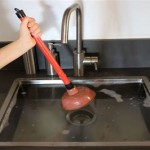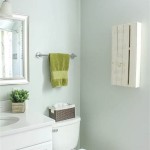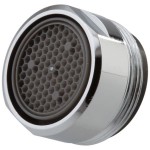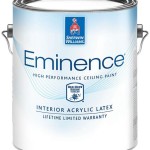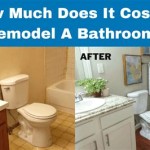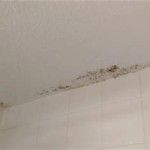The Importance of Non-Slip Backing in Bathroom Mats: A Comprehensive Guide
Bathroom mats are essential safety and comfort features in any bathroom. They prevent slips and falls on wet surfaces and provide a soft, warm place to stand. However, the effectiveness of a bathroom mat hinges significantly on its backing. Non-slip backing is crucial for keeping the mat securely in place, maximizing its safety benefits and enhancing its overall utility.
Without adequate non-slip properties, a bathroom mat becomes a hazard rather than a safety asset. A mat that slides easily can lead to accidents, especially for vulnerable individuals such as the elderly or those with mobility issues. The primary function of a bathroom mat – to prevent falls – is directly tied to the quality and effectiveness of its non-slip backing. Understanding the different types of non-slip materials and their performance characteristics is vital for selecting the right bathroom mat.
Understanding the Science of Non-Slip Backing
The effectiveness of non-slip backing relies on the principles of friction. Friction is the force that resists motion between two surfaces in contact. A higher coefficient of friction indicates a stronger resistance to sliding. Non-slip backings are designed to maximize the frictional force between the mat and the bathroom floor. This is achieved through a combination of materials, textures, and designs.
The material used for the backing plays a significant role in determining its non-slip properties. Some materials, such as rubber and PVC, naturally possess high friction coefficients. The surface texture of the backing also contributes to its effectiveness. A textured surface increases the contact area between the mat and the floor, enhancing friction. Common textures include raised patterns, ridges, and dimples. These features create more points of contact and interrupt the formation of a smooth, potentially slippery interface.
Furthermore, the design of the non-slip backing can influence its performance. Some designs incorporate a grid pattern or a lattice structure, which effectively grips the floor and prevents slippage. Suction cups are another popular design element, particularly for mats used in showers or bathtubs. These suction cups create a vacuum seal with the floor, providing an even stronger grip.
It is important to note that the effectiveness of non-slip backing can be affected by the type of flooring. Smooth, non-porous surfaces, such as tile or vinyl, generally provide better adhesion compared to textured or uneven surfaces like stone or grout. The presence of moisture or soap residue on the floor can also reduce friction and compromise the performance of the non-slip backing.
Regular cleaning and maintenance of both the bathroom floor and the mat's backing are essential for preserving its non-slip properties. Dust, dirt, and soap scum can accumulate on the backing, reducing its grip. Periodic washing or wiping down the backing with a mild detergent can help remove these contaminants and restore its effectiveness.
Types of Non-Slip Materials Used in Bathroom Mats
Various materials are employed in the manufacturing of non-slip bathroom mat backings, each with its own advantages and disadvantages. The choice of material ultimately depends on factors such as cost, durability, comfort, and the specific requirements of the application.
Rubber: Rubber is a widely used material for non-slip backings due to its excellent friction properties and durability. Natural rubber and synthetic rubber, such as styrene-butadiene rubber (SBR), are commonly used. Rubber backings provide a strong grip on most floor surfaces and are resistant to water and chemicals. They are also relatively inexpensive, making them a cost-effective option. However, some types of rubber may have a slight odor, particularly when new. Additionally, rubber can degrade over time with exposure to sunlight and heat.
PVC (Polyvinyl Chloride): PVC is another popular material for non-slip backings. PVC is a synthetic plastic polymer that offers good friction and water resistance. It is also relatively inexpensive and easy to mold into various shapes and textures. PVC backings often feature raised patterns or dimples to enhance their grip. However, PVC is less environmentally friendly compared to natural rubber, as it is derived from petroleum and can release harmful chemicals during production and disposal. Some individuals may also be sensitive to PVC.
TPR (Thermoplastic Rubber): TPR is a type of rubber that combines the properties of rubber and plastic. It is known for its good elasticity, durability, and resistance to abrasion. TPR backings offer a good balance of comfort and grip. They are also recyclable, making them a more environmentally friendly option compared to PVC. However, TPR can be more expensive than rubber or PVC.
TPE (Thermoplastic Elastomer): Similar to TPR, TPE is a material that combines the properties of rubber and plastic. TPE offers excellent flexibility, durability, and resistance to chemicals. TPE backings are often used in high-end bathroom mats due to their superior performance and feel. They are also recyclable and free from harmful chemicals. However, TPE is generally more expensive than other non-slip materials.
Latex: Latex is a natural rubber derived from the sap of rubber trees. Latex backings are known for their excellent grip and flexibility. They are also relatively inexpensive. However, latex can cause allergic reactions in some individuals. Additionally, latex can degrade over time with exposure to sunlight and heat.
Other Materials: Other materials used for non-slip backings include foam, silicone, and specialized coatings. Foam backings provide cushioning and comfort, but they may not offer the same level of grip as rubber or PVC. Silicone backings are heat-resistant and durable but can be more expensive. Specialized coatings are often applied to fabrics to enhance their non-slip properties.
When choosing a bathroom mat, it is important to consider the type of non-slip material used in the backing. Each material offers different advantages and disadvantages, and the best choice will depend on individual preferences and needs.
Factors Affecting the Longevity and Effectiveness of Non-Slip Backing
The effectiveness of non-slip backing isn't static; it degrades over time due to several factors. Understanding these factors allows for better maintenance practices and informed purchasing decisions to prolong the lifespan and effectiveness of the bathroom mat.
Water Damage and Humidity: Constant exposure to water and high humidity levels, common in bathrooms, can significantly impact the integrity of the non-slip backing. Materials like latex and rubber are particularly susceptible to degradation from moisture, leading to cracking and reduced friction. Proper ventilation and regular drying of the mat can mitigate these effects.
Cleaning Products and Chemicals: Harsh cleaning chemicals, especially those containing bleach or strong acids, can damage the non-slip backing, leading to its disintegration or reduced effectiveness. Mild detergents and gentle cleaning methods are recommended for maintaining the integrity of the backing material. Rinsing the mat thoroughly after each cleaning is also crucial.
Wear and Tear: Everyday use of the mat naturally leads to wear and tear on the non-slip backing. Friction from foot traffic, combined with the weight applied, can cause the backing to flatten or lose its texture over time. Rotating the mat periodically can distribute the wear more evenly and extend its lifespan.
Substrate Compatibility: The type of flooring the mat is placed on dramatically affects its performance. Textured or uneven floors may not allow for optimal contact with the non-slip backing, reducing its effectiveness. Smooth, non-porous surfaces like tile or vinyl generally provide better adhesion. Ensuring the floor surface is clean and dry before placing the mat can also enhance its grip.
Material Quality: The quality of the non-slip material itself is a crucial factor in determining its longevity. Lower-quality materials tend to degrade faster and offer less effective slip resistance compared to higher-grade alternatives. Investing in a bathroom mat with a durable, high-quality backing material is a worthwhile investment in safety and longevity.
UV Exposure: Prolonged exposure to direct sunlight can degrade certain materials used in non-slip backings, especially rubber and latex. The UV radiation causes the material to break down, leading to reduced flexibility and increased brittleness. If possible, avoid placing the bathroom mat in direct sunlight to preserve its integrity.
Storage Conditions: When not in use, proper storage can help prolong the life of the non-slip backing. Avoid folding or creasing the mat, as this can damage the backing and reduce its effectiveness. Store the mat in a cool, dry place away from direct sunlight and extreme temperatures.
By considering these factors and implementing proper maintenance practices, it is possible to extend the lifespan and effectiveness of non-slip backing, ensuring a safer and more comfortable bathroom experience.

Terracotta Oriental Persian Bathroom Rugs With Thicken Non Slip Rubber Backing 20 W X 31 L Boho Tribal Vintage Traditional Soft Velvet Absorbent

Nestl Bathroom Rugs Machine Washable Bath Mats For Floor Nonslip Backing Rubber Rug Teal

Nestl Bathroom Rugs Machine Washable Bath Mats For Floor Nonslip Backing Rubber Rug White

Saffron Fabs Regency 36 In X 24 Cotton Latex Spray Non Skid Backing White Textured Border Machine Washable Bath Rug Sfbr1006

Lochas Bath Rugs 24 X 60 Large Runner Bathroom Rug Soft Luxury Chenille Mats With Non Slip Backing Throw Absorbent Carpet For Tub Shower Machine

Ultra Thin Bath Mat For Under Door Non Slip Rubber Backing Quick Dry Cheni

Non Slip Bath Mats Soft Pvc Bathroom Floor With Foot Massage Design Interlocking Shower Toilet Rugs Secure Comfortable

Betus Black 16 In X 24 Velvet U Shaped Contour Memory Foam Toilet Mat Non Slip Backing Washroom Rug B The Home

Ambesonne Grey And Yellow Bath Mat Under The Sea Inspired Flowers Abstract Swirls Backdrop Plush Bathroom Decor With Non Slip Backing 29 5 X 17 Michaels

Non Slip Bath Mat Water Absorbent Toilet Pedestal Mats Small Large Bathroom Rug
